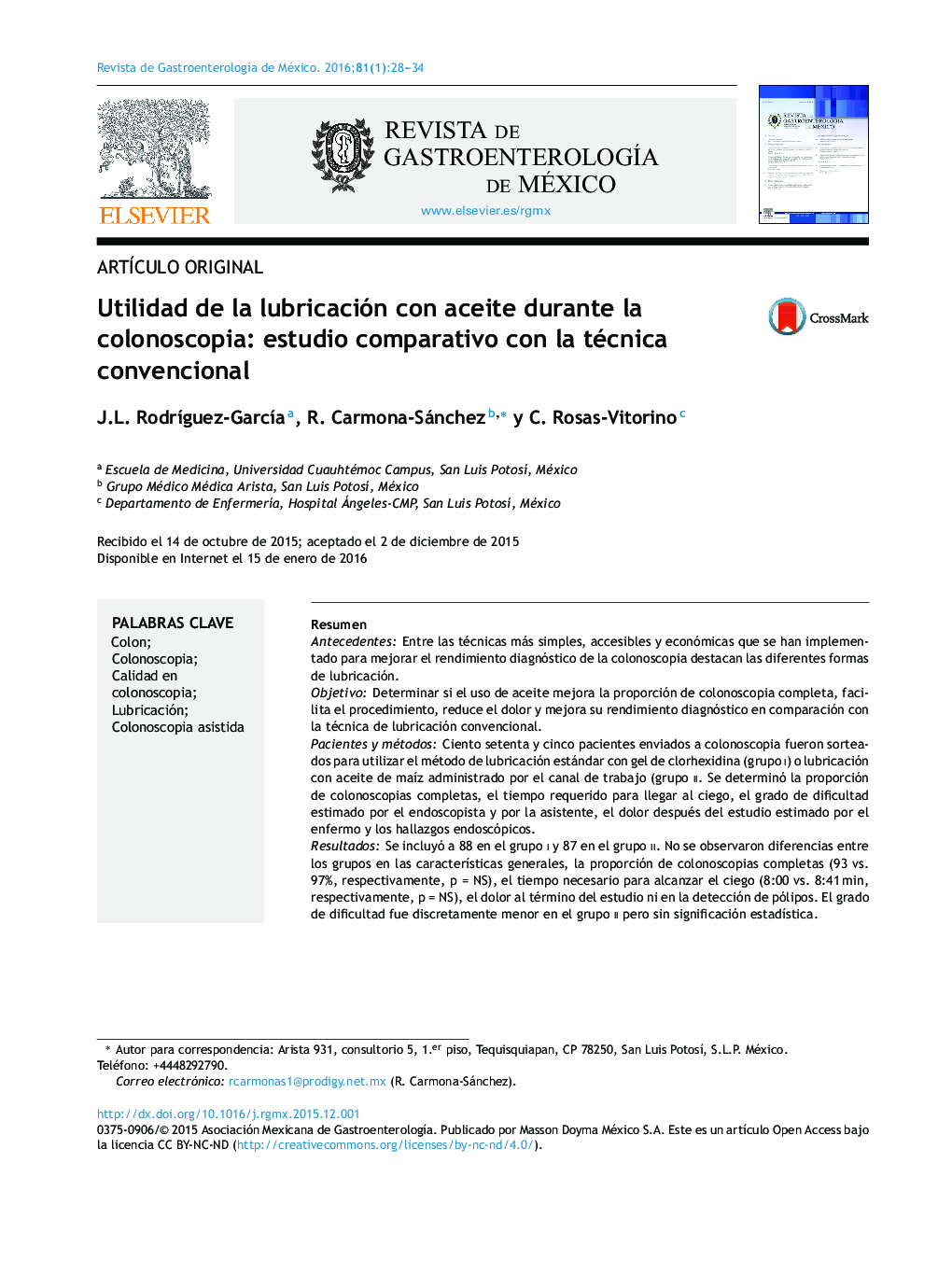| Article ID | Journal | Published Year | Pages | File Type |
|---|---|---|---|---|
| 3318694 | Revista de Gastroenterología de México | 2016 | 7 Pages |
ResumenAntecedentesEntre las técnicas más simples, accesibles y económicas que se han implementado para mejorar el rendimiento diagnóstico de la colonoscopia destacan las diferentes formas de lubricación.ObjetivoDeterminar si el uso de aceite mejora la proporción de colonoscopia completa, facilita el procedimiento, reduce el dolor y mejora su rendimiento diagnóstico en comparación con la técnica de lubricación convencional.Pacientes y métodosCiento setenta y cinco pacientes enviados a colonoscopia fueron sorteados para utilizar el método de lubricación estándar con gel de clorhexidina (grupo i) o lubricación con aceite de maíz administrado por el canal de trabajo (grupo ii. Se determinó la proporción de colonoscopias completas, el tiempo requerido para llegar al ciego, el grado de dificultad estimado por el endoscopista y por la asistente, el dolor después del estudio estimado por el enfermo y los hallazgos endoscópicos.ResultadosSe incluyó a 88 en el grupo i y 87 en el grupo ii. No se observaron diferencias entre los grupos en las características generales, la proporción de colonoscopias completas (93 vs. 97%, respectivamente, p = NS), el tiempo necesario para alcanzar el ciego (8:00 vs. 8:41 min, respectivamente, p = NS), el dolor al término del estudio ni en la detección de pólipos. El grado de dificultad fue discretamente menor en el grupo ii pero sin significación estadística.ConclusionesLa lubricación con aceite durante la colonoscopia no mejora la proporción de colonoscopia completa, no parece facilitar el estudio, no reduce el dolor y no aumenta rendimiento diagnóstico del examen en comparación con la técnica convencional.
BackgroundThe different forms of lubrication are among the most simple, accessible, and economic techniques that have been implemented for improving the diagnostic performance of colonoscopy.AimTo determine whether the use of oil improved the number of complete colonoscopies, facilitated the procedure, reduced pain, or improved the study's diagnostic performance, compared with the conventional lubrication technique.Patients and methodsOne hundred and seventy-five patients referred for colonoscopy were alternately allocated to receive treatment with the standard lubrication method with chlorhexidine gel (group 1) or lubrication with corn oil administered through the working channel (group II). The number of complete colonoscopies, the length of time needed to reach the cecum, the degree of difficulty estimated by the endoscopist and the assistant, the level of pain at the end of the study estimated by the patient, and the endoscopic findings were all determined.ResultsEighty-eight patients made up group I and 87 made up group II. No statistically significant differences were found between the two groups in relation to general characteristics, the number of complete colonoscopies (93 vs. 97%, respectively), the time needed to reach the cecum (8:00 vs. 8:41 min, respectively), the level of pain at the end of the study, or the detection of polyps. The degree of difficulty was slightly lower in group II, but with no statistical significance.ConclusionsLubrication with oil during colonoscopy did not improve the number of complete colonoscopies, did not facilitate the study, nor did it reduce pain or increase the diagnostic performance of the study, when compared with the conventional technique.
